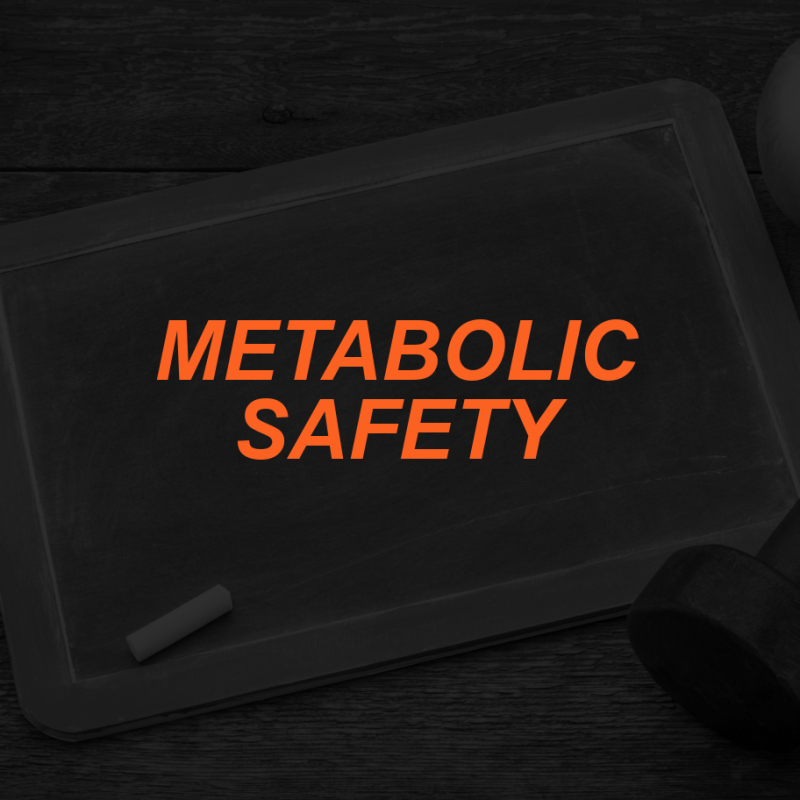
Why do personal training clients often feel as though or perceive that they are not making weight loss progress? As fitness professionals, we must consider the possibility that they truly are not making progress because their bodies do not feel safe or balanced. While a lack of metabolic safety or outright metabolic syndrome is not every client’s issue, it can be an issue for some. A dysregulated cellular environment can explain constant fatigue, micronutrient insufficiencies or deficiencies, trouble losing weight or gaining muscle, poor sleep quality, liver congestion, adrenal burnout, etc.
Do any of the following statements sound familiar to you?
“My body is just messed up.”
“My body refuses to work with me to change.”
“I feel as though no matter how hard I try, I’m not losing weight.”
I hear such statements quite often from clients and students. These statements stem from frustration, a lack of obvious progress, fatigue, and perceived defeat. I work to reframe the above statements with encouraging and caring responses such as those below.
“Your body loves you.”
“Your body is working to maintain balance.”
“Your body is protecting you.”
Why is this important? Because metabolism is our business and it is very much a cellular process. Metabolism is not only about calories in versus calories out. It involves hormonal fluctuations, thyroid function, mineral stores, and more. Creating a balanced system allows the body to focus its energy where it needs to be – on progress not on repair or preventing further damage. If the body’s cells are not functioning properly, impacting metabolism, and raising BMR becomes that much more of a challenge for our clients. Here are ways to explore and examine the metabolic safety of your fitness clients.
Metabolic Syndrome
Metabolic Syndrome, also referred to as Syndrome X.
Identified as recently as a mere two decades ago, this mysterious combination of risk factors seems to be as ubiquitous as the common cold. According to the American Heart Association, 50-75 million Americans currently live with Metabolic Syndrome and the numbers continue to increase along with the age of our current population.
Metabolic Syndrome is defined by having at least 3 of the following 5 risk factors:
- Waist Circumference: Men: 40 inches or larger; Women: 35 inches or larger
- High Triglycerides: 150 mg/dL or higher
- Low Good Cholesterol (HDL): Men: Less than 40 mg/dL; Women: Less than 50 mg/dL
- High Blood Pressure: 135/85 mm Hg or greater
- High Fasting Blood Glucose Level: 100 mg/dL or higher
Personal trainers may be able to identify signs of questionable metabolic safety which may appear more obviously before the above markers manifest.
5 Possible Signs of Questionable Metabolic Safety
It is not within our scope of practice to conduct in-depth blood labs, nutrient analyses, or HTMA (Hair Tissue Mineral Analysis) tests. However, there are things we can encourage our clients “tune in” to or raise their awareness of that could relate to their metabolic function.
- Temperature and pulse rate. Assessing temperature and heart rate first thing in the morning can provide insight into how well the metabolism is firing. Lower temperatures can be a sign that stress hormones are burning calories (stress hormones being too high). Pulse rate, depending on how low it is, can point to the body using more stress hormones. When this happens, the body conserves energy by lowering the heart rate. It’s important to note that a low resting heart rate can also be an indicator of high cardiorespiratory fitness. It is not uncommon to see very low heart rates in runners and endurance athletes.
- Low testosterone (total and free). A hormone imbalance like this one is generally a response (symptom) to a deeper issue. If this is a concern for clients, it might be worth evaluating how they are supporting their hormones. Are they eating enough, getting sufficient minerals, managing stress effectively and consistently, sleeping well, resting and recovering, hydrating, and getting electrolytes in balance? Also, is the client getting enough sunshine? (This can naturally raise low testosterone levels).
- Low RBC/WBC/AST (aspartate aminotransferase): If these levels are low, it might indicate a need to address b vitamins for liver support and make sure protein intake is optimal.
- Thyroid (High TSH, high TOP antibodies, High free T4, and Low T3): Sometimes, it really is not the thyroid that is malfunctioning. It’s an issue related to if the body is struggling to convert T4 to T3 in the liver (this might mean the liver is sluggish). When this happens, the body is asked to increase thyroid stimulating hormone to produce more free T4 to be converted to T3 because too little T3 is being pushed out. Potassium-rich foods are key for thyroid health (potatoes, bananas, coconut, brewers yeast, spinach, mango).
- Low caloric intake: Chronic low-calorie intake is hard on the body. This is what often shifts the body into conservation mode. Questions to ask clients to assess if they are eating enough might include:
- Do you experience cold hands, feet, and nose?
- Do you experience afternoon fatigue?
- Is body temperature running about 97.8 consistently?
- Do you have skin issues?
- Are you waking up frequently through the night or suffering from insomnia?
If your client answers yes to three to five of these, help them monitor their dietary intake to be sure they are eating enough nutrient-dense calories in the course of their day. ATTICA Study investigators demonstrated that the adoption of the Mediterranean diet by physically active people was associated with greater reduction in the odds of developing Metabolic Syndrome than either diet or exercise alone.
A Mediterranean diet is one largely comprised of olive oil, whole grains, an abundance of vegetables and fruit, nuts and legumes, fish and seafood, and very little red meat and dairy products.
Working with a registered dietitian to provide the necessary support to your clients is key in identifying if metabolic safety is a concern. It is also the best way to address the insufficiencies. You can work in collaboration with an RD to guide your client toward supportive nutritional practices and the RD can guide and recommend smart supplementation if that is necessary after a thorough analysis.
If a lack of progress is consistently present for your client, it might be worth digging deeper to understand what is happening (or not happening) at the cellular level that may be threatening metabolic safety. Most of these issues, if they stem from insufficiencies or deficiencies, can be alleviated with whole foods, minerals, and quality supplements.
References
Ford ES, Giles WH, Dietz WH. Prevalence of the metabolic syndrome among US adults: findings from the third National Health and Nutrition Examination Survey. JAMA. 2002;287:356-359.
Ford ES, DeStefano F. Risk factors for mortality from all causes and from coronary heart disease among persons with diabetes. Findings from the National Health and Nutrition Examination Survey I Epidemiologic Follow-up Study. Am J Epidemiol. 1991;133:1220-1230.






